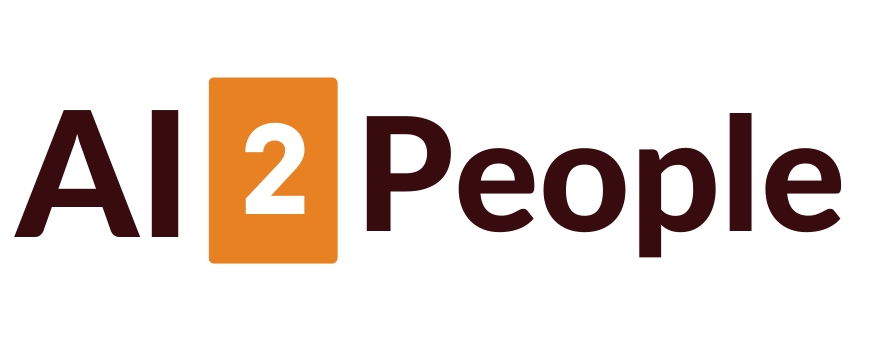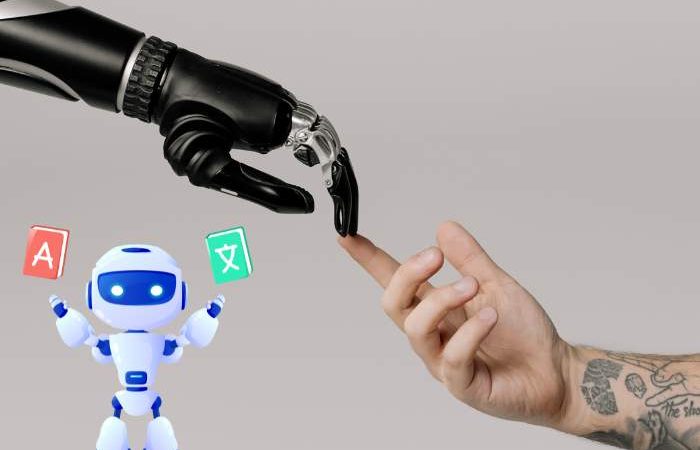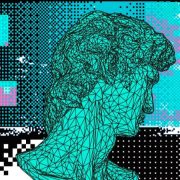
Machine Learning Algorithms: A Comprehensive Guide
Machine learning has emerged as a game-changing subfield of artificial intelligence, enabling machines to simulate intelligent human behavior and solve complex tasks much like humans do. To achieve this, machine learning relies on a variety of algorithms that drive its capabilities and limitations.
In this article, we’ll explore the different types of machine learning algorithms and how they work to achieve descriptive, predictive, and prescriptive results in a variety of applications.
Descriptive Algorithms
Descriptive algorithms are used to describe and understand complex data sets, allowing us to gain insights into patterns and trends. These algorithms are useful in applications such as data visualization and fraud detection, where it’s important to understand large amounts of data quickly and accurately.
One type of descriptive algorithm is clustering, which groups similar data points together. This is useful in market segmentation and identifying patterns in customer behavior. Another type is dimensionality reduction, which simplifies large data sets by eliminating irrelevant data points, making it easier to analyze and understand.
Predictive Algorithms
Predictive algorithms are used to predict future outcomes based on past data. These algorithms are used in a wide range of applications, from weather forecasting to financial modeling. One common type of predictive algorithm is regression, which predicts a numerical value based on a set of input variables.
Another type of predictive algorithm is classification, which predicts a category or class based on input variables. This is useful in applications such as image recognition and sentiment analysis.
Prescriptive Algorithms
Prescriptive algorithms are used to suggest the best course of action based on a set of parameters. These algorithms are used in applications such as personalized medicine and recommendation systems. One common type of prescriptive algorithm is optimization, which finds the best solution to a problem based on a set of constraints.
Another type of prescriptive algorithm is reinforcement learning, which is used in applications such as game AI and robotics. This algorithm learns through trial and error, improving its performance over time.
Types of Machine Learning Algorithms
Now that we’ve covered the basic functions of machine learning algorithms, let’s take a closer look at the different types of algorithms used in the field.
- Supervised Learning
Supervised learning is a type of machine learning where the algorithm learns from labeled data sets. The algorithm is trained to recognize patterns and make predictions based on input variables. This type of learning is useful in applications such as spam detection and image recognition.
- Unsupervised Learning
Unsupervised learning is a type of machine learning where the algorithm learns from unlabeled data sets. The algorithm identifies patterns and relationships in the data without any prior knowledge of the data set. This type of learning is useful in applications such as anomaly detection and market segmentation.
- Semi-Supervised Learning
Semi-supervised learning is a type of machine learning where the algorithm learns from a combination of labeled and unlabeled data sets. This type of learning is useful in applications where labeled data is expensive or time-consuming to obtain.
- Reinforcement Learning
Reinforcement learning is a type of machine learning where the algorithm learns through trial and error. The algorithm is rewarded for making correct decisions and penalized for making incorrect decisions. This type of learning is useful in applications such as game AI and robotics.
Unsupervised Learning: Discovering Patterns Without Explicit Instruction
Unsupervised learning is a machine learning technique that allows the algorithm to identify patterns in data without being explicitly provided with an answer key or operator instructions. In other words, the algorithm learns from the available data and determines correlations and relationships on its own. This type of learning is unsupervised because the machine is left to interpret large data sets and organize them according to their structure.
As the machine assesses more data, its ability to make decisions on that data gradually improves and becomes more refined. Some common techniques used in unsupervised learning include clustering, dimension reduction, and association rule mining.
Clustering: Grouping Similar Data for Pattern Discovery
Clustering is a technique used in unsupervised learning to group similar data based on defined criteria. It is a useful tool for segmenting data and finding patterns in each group. For example, clustering can be used in marketing to group customers based on their buying behavior or in healthcare to group patients based on their symptoms.
Dimension Reduction: Simplifying Complex Data Sets
Another technique used in unsupervised learning is dimension reduction. This method reduces the number of variables considered in a data set to find the exact information required. By simplifying complex data sets, it makes it easier for machines to interpret the information and discover patterns.
Association Rule Mining: Discovering Relationships Between Independent Data Repositories
Association rule mining is another technique used in unsupervised learning to discover relationships between seemingly independent databases or other data repositories through association rules. It is commonly used in market basket analysis to discover which products are frequently purchased together by customers.
Reinforcement Learning: Learning from Trial and Error
Reinforcement learning is another machine learning technique where a set of actions, parameters, and end values are provided to the algorithm for use in regimented learning processes. The machine learning algorithm explores a variety of options and possibilities, monitoring and evaluating each result to determine which one is the best. By learning from trial and error and adapting its approach to the situation based on previous experiences, it helps achieve the best outcome.
Artificial Neural Networks: Understanding the Fundamentals and Deep Learning Algorithms
Artificial Neural Networks (ANNs) are gaining popularity in the field of Artificial Intelligence (AI) as they attempt to replicate the functioning of the human brain. ANNs are composed of interconnected nodes or artificial neurons, which aim to loosely mimic the connectivity of neurons in the biological brain. In this article, we’ll explore the fundamentals of ANNs and their various components. We’ll also delve into Deep Learning Algorithms, which are more powerful and efficient than ANNs and are used to solve real-world problems.
Understanding Artificial Neural Networks
An ANN is a complex network of interconnected nodes or artificial neurons, which are analogous to the neurons in the biological brain. These neurons are connected to each other, forming a network that can process and transmit information.
Components of Artificial Neural Networks
The essential components of ANNs include:
- Neurons – These are the basic units of ANNs that process and transmit information. The neurons of an ANN are interconnected, just like the cells in the human brain.
- Activation Function – The activation function generates an output from the hidden neuron to the output neuron. This output can be passed on to the subsequent neuron which will later become the input to those neurons.
- Categories of Neurons – ANNs consist of three categories of neurons – Input Neuron, Hidden Neuron, and Output Neuron.
Some commonly used Artificial Neural Network Algorithms are:
- Feed-Forward Neural Network: This is a basic type of neural network that transmits information in a single direction, from input to output.
- Radial Basis Function Network (RBFN): This algorithm is used for classification and prediction tasks. It uses radial basis functions to model complex patterns.
- Kohonen Self-Organizing Neural Network: This network is used for unsupervised learning tasks. It is capable of discovering and representing the underlying structure of input data.
- Perceptron: This algorithm is used for binary classification tasks. It consists of a single layer of neurons and is used for linearly separable problems.
- Multi-Layer Perceptron: This is a more complex neural network that consists of multiple layers of neurons. It is used for nonlinear problems.
- Back-Propagation: This is a popular algorithm used for supervised learning tasks. It is used to train ANNs to predict outputs for a given input.
- Stochastic Gradient Descent: This algorithm is used to optimize the weights and biases of ANNs. It is commonly used in deep learning.
- Modular Neural Networks (MNN): This network is composed of multiple smaller networks that are interconnected to form a larger network. It is used for complex problems that cannot be solved by a single neural network.
- Hopfield Network: This network is used for pattern recognition tasks. It is capable of storing and retrieving patterns from memory.
The Ultimate Guide to Deep Learning Algorithms: From CNN to RBMs
Deep learning algorithms have transformed the field of artificial intelligence by enabling machines to solve complex problems that were previously deemed impossible. In this article, we will explore the most commonly used deep learning algorithms that are used to solve real-world problems.
Convolutional Neural Networks (CNN)
CNNs are widely used in image and video recognition tasks. They are designed to process data with a grid-like topology, such as an image. CNNs use convolutional layers to scan the input image and detect patterns or features such as edges, corners, or shapes. These features are then fed into fully connected layers that classify the image into different categories.
Recurrent Neural Networks (RNN)
RNNs are used to process sequential data, such as text or speech. Unlike CNNs, RNNs can process inputs of varying lengths and use the output from previous steps as input for the current step. This makes them well-suited for tasks such as language translation, speech recognition, and sentiment analysis.
Long Short-Term Memory Network (LSTM)
LSTM is a type of RNN that is designed to avoid the vanishing gradient problem that occurs when training deep neural networks. It achieves this by introducing a memory cell that can store information over a long period of time. LSTMs are widely used in natural language processing tasks such as speech recognition, language translation, and text classification.
Generative Adversarial Networks (GANs)
GANs are a type of unsupervised learning algorithm that consists of two networks: a generator and a discriminator. The generator generates new data that is similar to the training data, while the discriminator tries to distinguish between the generated data and the real data. GANs are widely used in image and video synthesis, as well as in other domains such as music generation and text generation.
Deep Belief Networks (DBNs)
DBNs are a type of feedforward neural network that consists of multiple layers of hidden units. They are trained using a layer-by-layer unsupervised learning algorithm called Restricted Boltzmann Machines (RBMs). DBNs are used for tasks such as image and speech recognition, and they have also been used in medical diagnosis and drug discovery.
Autoencoders
Autoencoders are neural networks that are used for dimensionality reduction and data compression. They consist of an encoder that compresses the input data into a lower-dimensional representation, and a decoder that reconstructs the original data from the compressed representation. Autoencoders are used in image and video compression, as well as in anomaly detection and feature extraction.
Restricted Boltzmann Machines (RBMs)
RBMs are a type of unsupervised learning algorithm that is used to learn a probability distribution over the input data. They are trained using a contrastive divergence algorithm that maximizes the likelihood of the data. RBMs are used for tasks such as feature learning, dimensionality reduction, and collaborative filtering.






















